Archive for February, 2010
Saturday, February 20th, 2010
On Wednesday, Feb. 24, at 11 a.m., North Carolina Central University will ceremonially break ground on three major construction projects: a new nursing building, a residence hall and a parking deck. The combined cost of the projects will be about $70 million. The ceremony will take place on the front lawn of the old Holy Cross Church, at 1400 S. Alston Ave., where the new nursing facility will be built.
The $25 million, state-of-the-art nursing structure will offer 65,000 square feet of space, including a 250-seat auditorium, a large skills lab and a family room for students with children. Completion is anticipated in July 2011. The facility will better enable NCCU to help address the statewide shortage of nurses and increase diversity in the field. According to the N.C. Center on Public Policy, North Carolina will face a shortage of 9,000 nurses in the next five years, and 18,000 by 2020. Last year, 509 students were enrolled in NCCU’s nursing program, a four percent increase from 2007-08.
To make room for the nursing building, preparations are in place to move the old Holy Cross church to the historic corridor at 1912 Fayetteville St., beside NCCU’s Shepard House. No changes are planned to the exterior or interior of the church but it will be repurposed as meeting space for NCCU and the community.
Dedicated in 1953, the small, picturesque stone structure was home to one of the oldest African-American Catholic congregations in the state. The building and the 3.6 acres on which it stands were sold to the state for the development of the campus when parishioners moved to a new and larger Holy Cross Sanctuary at 2438 South Alston Ave., in 2006.
Chidley North Residence Hall, the planned 125,000 square foot, four-story residence hall will be built further north on Alston at the corner of Lawson Street. The $30 million building will house 520 students in suite-style accommodations. It will also contain staff apartments, a multi-purpose classroom, a computer lab and offices. The scheduled completion date is May 2011. Campus officials say it cannot come on stream fast enough; last fall, NCCU opened its doors to the largest freshman class in its history, 1,347 students, and the university is committed to housing its freshmen and sophomores on campus.
Finally, construction has begun on a mixed-use structure to house retail, office space, and a parking deck, with completion scheduled for August 2010. The Latham Parking Deck will cost $15 million and provide parking for 750. At ground level, the deck will contain a coffee shop, bookstore and a police substation.
Posted in Public Affairs | 4 Comments »
Thursday, February 11th, 2010
Eagles’ Gridiron Slate Includes Six Home Games, Four MEAC Opponents in 2010
The 2010 North Carolina Central University football schedule features six home contests, including a Thursday night season-opener and the return of rival North Carolina A&T to O’Kelly-Riddick Stadium, along with four games against conference foes, as NCCU announced its gridiron slate on Thursday (Feb. 11).
The 2010 NCCU schedule also includes the continued series with rival Winston-Salem State, a return trip to Appalachian State, the first home contest against Hampton in 19 years, a game inside the Georgia Dome, and Bethune-Cookman’s first visit to O’Kelly-Riddick Stadium.
“It’s a very competitive schedule,” said Mose Rison, entering his fourth season as head football coach at NCCU. “We play six games on our campus, which is a big plus. Our kids enjoy playing in front of our student body and our fans.
“Without a question, this is a great home schedule, with the likes of Winston-Salem State, A&T, Hampton and Bethune-Cookman coming to Durham. Plus, the return of former CIAA opponent Johnson C. Smith and Edward Waters for Homecoming,” Rison added. “We’re excited.”
The Eagles will open their fourth NCAA Division I-FCS campaign with a rare Thursday night home game on Sept. 2 (7 p.m.) against former CIAA adversary Johnson C. Smith. This will be the first meeting between the Eagles and the Golden Bulls since 2006, NCCU’s last season in the CIAA. NCCU leads the series 48-18-3.
NCCU returns home on Sept. 11 to host the Rams on Winston-Salem State at 6 p.m. The Eagles earned an 18-10 road victory over the Rams last season to take a one-game lead in the series, which stands at 22-21. WSSU will play the 2010 season as a Division II member of the CIAA.
The Eagles will play their first of four road games on Sept. 18 by returning to Boone, N.C., to play Appalachian State, winners of three FCS national championships. Last year, the Mountaineers defeated the Eagles 55-21 in their first meeting. ASU went on to win their fifth-straight Southern Conference title, advanced to the national semifinals, posted an 11-3 overall record and garnered a No. 3 national ranking in the final FCS poll.
On Sept. 25 (6 p.m.), the rival Aggies of North Carolina A&T return to Durham, N.C., for the first time since 1992. From 1994-2005, the two battled in the “Eagle-Aggie Classic” at Carter-Finley Stadium in Raleigh, N.C., before returning to a home-and-home series. Two years ago, NCCU opted to host its home game at Memorial Stadium in Charlotte, N.C., where more than 20,000 fans witnessed the Eagles beat the Aggies, 28-27. Last season, A&T edged NCCU 23-17 in double overtime in Greensboro, N.C. The Eagles have won three of the last four matchups, but A&T holds a 46-30-5 advantage in the 86-year history of the rivalry.
“People have been calling and talking about how this will be one of the greatest atmospheres we have had here at O’Kelly-Riddick Stadium in a long time,” Rison said about the Aggies’ return to Durham. “It’s going to be an electric night.”
After an open week, the Eagles welcome another team to O’Kelly-Riddick Stadium that has not visited in a while. On Oct. 9 (4 p.m.), the Hampton Pirates travel to Durham for the first time since the end of the 1991 campaign. In last season’s contest, Hampton rallied for a 31-24 victory in Virginia, marking the Pirates’ sixth consecutive win a series that stands at 15-5 in favor of HU.
On Oct. 16, NCCU will compete in its fourth NFL stadium in the past decade as the Eagles play the Georgia State Panthers inside the Georgia Dome, home of the Atlanta Falcons. Georgia State enters its first year of football competition and is slated to join the Colonial Athletic Association in 2012.
On Oct. 23 (2 p.m.), the Wildcats of Bethune-Cookman will take the NCCU gridiron for the first time. The only other meeting between these future MEAC foes took place on Sept. 24, 1994 in Daytona Beach, Fla., when the Eagles won by a score of 24-5.
On Oct. 30 (2 p.m.), NCCU celebrates Homecoming against the Tigers of Edward Waters in the sixth and final home game of the season for the Eagles. In the prior three meetings, all NCCU victories, the Eagles have outscored EWC 149-26, including a 34-14 win in the last matchup in 2008.
After playing seven of their first eight contests in North Carolina, the Eagles venture to Delaware State on Nov. 6. NCCU holds a 13-5 advantage in the series, including victories in the last four meetings against the Hornets. The last time these two teams met, the Eagles defeated DSU, 26-23, on Sept, 11, 2004, in Dover, Del.
NCCU wraps up the 2010 campaign on Nov. 13 at Savannah State. The Eagles beat the Tigers, 35-14, in Durham last season. NCCU leads the series 4-0-1.
In 2009, NCCU won four of its last five games to finish with a 4-7 record for the second consecutive season.
The Eagles are entering their fourth season of competition on the NCAA Division I-FCS (Football Championship Subdivision) level after winning back-to-back conference championships during their final two years (2005, 2006) in the NCAA Division II Central Intercollegiate Athletic Association.
NCCU will become members of the MEAC (Mid-Eastern Athletic Conference) on July 1, 2010, but will not be eligible for the conference championship during the upcoming season.
Information regarding NCCU football season tickets will be released next week.
NOTES:
NCCU Road Warriors (Driving Distance – One-Way):
Sept. 18 at Appalachian – 168 miles (2:59)
Oct. 16 at Georgia State – 383 miles (5:59)
Nov. 6 at Delaware State – 354 miles (6:20)
Nov. 13 at Savannah State – 352 miles (5:41)
(Source: Google Maps)
MEAC Opponents (NCCU Joins MEAC July 1, 2010):
North Carolina A&T State University (Greensboro, N.C.)
Hampton University (Hampton, Va.)
Bethune-Cookman University (Daytona Beach, Fla.)
Delaware State University (Dover, Del.)
Recent Trips to NFL Stadiums:
Georgia Dome – Atlanta Falcons (Oct. 16, 2009 vs. Georgia State)
Giants Stadium – New York Giants (Sept. 15, 2007 vs. Elizabeth City State – W, 18-10)
Ericsson Stadium – Carolina Panthers (Nov. 4, 2001 vs. Johnson C. Smith – W, 34-3)
Veterans Stadium – Philadelphia Eagles (Sept. 30, 2000 vs. Morris Brown – W, 19-16)
For updated schedule information, visit www.NCCUEaglePride.com or call (919) 530-7054.
For ticket information, visit www.NCCUEaglePride.com or call the NCCU Ticket Office at (919) 530-5170.
(as of Feb. 11, 2010)
Posted in Public Affairs | 5 Comments »
Thursday, February 11th, 2010
Organizers of North Carolina Central University’s Centennial are seeking nominations from the community for an honor that will be bestowed on five people connected to the university.
NCCU Chancellor Charlie Nelms will confer the Shepard Medallion on five individuals later this year as part of the school’s 100th birthday celebration. The university, then called the National Religious Training School and Chautauqua, officially opened its doors on July 5, 1910, at its current location on Fayetteville Street.
“People have always made this university what it is, beginning with the founder, Dr. James E. Shepard,” said Nelms. “So we think that people ought to be at the center of our centennial commemoration, and that those who have given the most of themselves ought to be recognized in a significant way during our celebration.”
The medallion will be given to five alumni, former faculty, staff and administrators, trustees or others connected to NCCU. The criteria are exemplary service or accomplishments in one or more of the following areas:
· The recipient’s profession, discipline or field of study;
· The recipient’s commitment and leadership in advancing the mission of NCCU;
· The recipient’s local, state or global service to humankind, consistent with the university’s motto of “Truth and Service.”
Those eligible for the award must be living. Former employees must have been separated from the university for at least a year on May 1. The deadline for nominations is 5 p.m. on Feb. 26. A campus committee will review nominations and send its choices to Nelms, who will make the final selections.
A nomination form is available at www.nccufoundation.org/centennial/heritage.html. Residents also can mail or hand-deliver nominations to the Office of Public Relations, William Jones Building, Suite #118, North Carolina Central University, 1801 Fayetteville St., Durham, NC 27707. They must include their own name, address and phone number and a letter of nomination and biographical sketch of the person they are nominating. They also must submit one-page letters of reference about the individual from two other people. The letters should give specific examples of why the nominee should receive the award. The nominee’s curriculum vita should be sent, too.
Posted in Public Affairs | 6 Comments »
Wednesday, February 10th, 2010
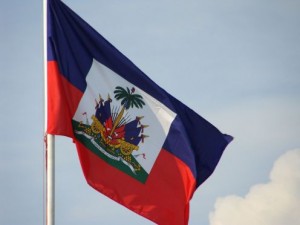 On Thursday, February 25, WNCU 90.7 FM will partner with the American Red Cross, Central North Carolina Chapter to host a Day of Relief for Haiti. WNCU will conduct an on air fundraiser to benefit Haiti from 8:00 a.m. to 8:00 p.m. Red Cross volunteers and staff will operate phone lines and answer questions about the work of the Red Cross and the relief efforts in Haiti. On Thursday, February 25, WNCU 90.7 FM will partner with the American Red Cross, Central North Carolina Chapter to host a Day of Relief for Haiti. WNCU will conduct an on air fundraiser to benefit Haiti from 8:00 a.m. to 8:00 p.m. Red Cross volunteers and staff will operate phone lines and answer questions about the work of the Red Cross and the relief efforts in Haiti.
One month after a devastating earthquake in Haiti, people in the country still need food, water, relief supplies, shelter, healthcare, family services and other assistance.
“Financial donations are the best way to help. We are very grateful to WNCU for working with us,” said Toby Barfield, Chapter Executive for the American Red Cross, Central North Carolina Chapter headquartered in Durham. “We have had such an overwhelming response from so many generous organizations, schools, businesses, restaurants, and individuals who want to get involved in the relief efforts by donating their time and money,” said Barfield.
The American Red Cross has committed nearly $80 million to meet the most urgent needs of earthquake survivors. Because of the generosity of donors, people in Haiti will receive more than immediate relief—they will receive resources, support and training from the Red Cross that will help them recover and rebuild in the years ahead.
“This is one small way for us to help the people in Haiti. I hope our loyal and generous listeners will take a few moments to call in and make a donation. A gift of any size will really help the people, especially the children who have lost so much,” said Lackisha Sykes Freeman, Interim General Manager of WNCU 90.7 FM.
“We hope our listeners will join us on Feb. 25th for this special Day of Relief for Haiti, and ask everyone in the community to give what they can. During the fund drive from 5:00 p.m. until 6:00 p.m., we will hold a special community-based talk show to discuss Haiti and its relevance to the African Diaspora. Michelle Laws community activist, educator and creator of The Word On The Street talk show on Blogtalkradio.com will host the program. Laws and her guests will discuss Haiti’s past, present and future from a historical, cultural and sociopolitical perspective,” said Kimberley Pierce Cartwright, the News & Public Affairs Director for WNCU.
For more information about the American Red Cross, please visit www.redcross.org or contact the local chapter at (919) 489-6541. For information about WNCU 90.7 FM, please call the station at (919) 553-7445 or visit the website at www.wncu.org.
Posted in Public Affairs | 5 Comments »
Saturday, February 6th, 2010
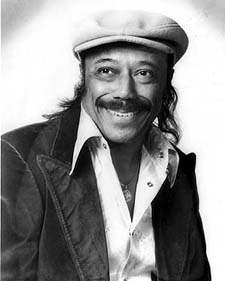 Horace Silver, jazz pianist, composer, and bandleader, was born on Sept. 2, 1928, in Norwalk, Conn. Silver performed with Stan Getz from 1950 – 51 before leading his own trio in 1952. Partnering with Art Blakey, he led the Jazz Messengers from 1954, then formed his own quintet in 1956, where he performed his own compositions in arrangements that provided the template for much of the hard bop of the 1950s and ’60s. Influenced by Bud Powell and Thelonious Monk, Silver combined the sophistication of bebop with the earthiness of the blues in compositions such as “The Preacher,” “Opus de Funk,” and “Sister Sadie.” Horace Silver, jazz pianist, composer, and bandleader, was born on Sept. 2, 1928, in Norwalk, Conn. Silver performed with Stan Getz from 1950 – 51 before leading his own trio in 1952. Partnering with Art Blakey, he led the Jazz Messengers from 1954, then formed his own quintet in 1956, where he performed his own compositions in arrangements that provided the template for much of the hard bop of the 1950s and ’60s. Influenced by Bud Powell and Thelonious Monk, Silver combined the sophistication of bebop with the earthiness of the blues in compositions such as “The Preacher,” “Opus de Funk,” and “Sister Sadie.”
Steeped in blues and a student of a church organist, Silver drew upon many sources for his musical vision, including Latin sounds that imbued his music with an intoxicating rhythmic quality. His inventive writing for small group settings, featuring a saxophone-trumpet front line, became a model for jazzmen of the post bop era. During a period when most jazz recording dates became “blowing sessions” in which the participants played unrehearsed standards and “head arrangements,” Silver maintained, within his small groups, a sense of unique compositional form. His tightly rehearsed groups became known for their impeccable sense of swing, while retaining a soulfully powerful sound. Many of Silver’s compositions such as “The Preacher,” “Juicy Lucy,” “Nica’s Dream,” “Sister Sadie,” and “Filthy McNasty” have become modern jazz classics and continue to find their way into the repertoires of jazz artists around the world.
Silver’s father, John Tavares Silver, hailed from the Cape Verde Islands, a former Portuguese colony off the west coast of Africa, and worked at the Norwalk Tire Factory. A violinist and guitarist, he played music at family parties. As a member of the Norwalk High School band, Silver played tenor saxophone under the influence of Lester Young. During his second year in high school, he took up the baritone saxophone, while pursuing his piano studies.
After graduating from high school, Silver continued playing piano, and primarily studied blues and boogie woogie players. His early training included memorizing Avery Parrish’s classic blues solos on Erskine Hawkins’s recording of “After Hours.” He also studied the music of Charlie Parker and jazz pianists Art Tatum and Teddy Wilson. As he later recounted in Talking Jazz, “Teddy Wilson – I copied a little of his stuff. I could copy stuff off the record. I couldn’t catch all of it. I bought a couple of Teddy Wilson piano folios and tried to practice them. Art Tatum piano folios were impossible for me to read. I couldn’t get through them, there were so many thirty-second, sixty-forth notes. It looked like somebody took some ink and just threw it at the paper.”
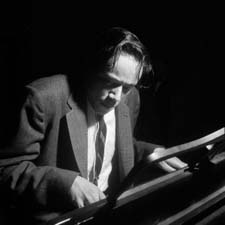 In 1950, while performing with Harold Holt in Hartford, Connecticut, Silver was discovered by saxophonist Stan Getz. Getz hired him for a group that toured extensively between 1950 and 1951. Within weeks of an August 1951 studio session, Silver left Getz’s group in order to establish himself in New York City’s flourishing jazz scene. By performing at Birdland, he was able to accompany many of the leading jazz talents of the day. In “Song of the Hawk,” Silver recalled playing Birdland with Hawk [Coleman Hawkins] and bassist Curly Russell. During the early 1950s, he performed with saxophonist Lester Young and bebop bassist Oscar Pettiford. In 1950, while performing with Harold Holt in Hartford, Connecticut, Silver was discovered by saxophonist Stan Getz. Getz hired him for a group that toured extensively between 1950 and 1951. Within weeks of an August 1951 studio session, Silver left Getz’s group in order to establish himself in New York City’s flourishing jazz scene. By performing at Birdland, he was able to accompany many of the leading jazz talents of the day. In “Song of the Hawk,” Silver recalled playing Birdland with Hawk [Coleman Hawkins] and bassist Curly Russell. During the early 1950s, he performed with saxophonist Lester Young and bebop bassist Oscar Pettiford.
In 1954, Silver led a quartet at Minton’s Playhouse with saxophonist Hank Mobley and bassist Doug Watkins. In February of 1954, he appeared as a member of the Art Blakey Quintet for the Blue Note album “At Night At Birdland” volumes one and two. Under Blakey’s leadership, Silver joined trumpeter Clifford Brown, Lou Donaldson, and bassist Curly Russell for a showcase of hard bop which included his three original compositions “Split Kick,” “Quicksilver,” and “Myreh.” Nick Catalano, author of Clifford Brown: The Life and Art of the Legendary Jazz Trumpeter, emphasized that the Birdland album “has become a jazz classic for many reasons; the brilliant improvisations, the innovative Silver compositions, the quintessential hard bop musical statements, and the production standards by Rudy Van Gelder and Blue Note.”
Because of its versatility and modern edge, Silver’s music influenced musical trends outside mainstream jazz. John Storm Roberts, in his book Latin Jazz: The First of the Fusions, commented that during the 1970s “Silver’s soul-Latin mix would give another shot in the arm to the movement toward a funk-Latin jazz fusion.” During the 1980s, Silver’s Latin-tinged music reached London discos, and influenced many of “the Young Lions” of the new acoustic jazz school. However, as Stuart Nicholson observed in Jazz: The 1980s Resurgence, “Silver failed to capitalize on the bebop revival of the 1980s in the way several of his contemporaries did.” In 1981, Silver formed Silveto Records. As he explained in Talking Jazz, the label was devoted to “self-help, holistic, metaphysical music” intended to integrate “a trilogy, consisting of spirit, mind and body.” Among the best of his Silveto recordings was “Music to Ease Your Disease.” This album featured Silver’s former saxophonist Junior Cook, trumpeter Clark Terry, bassist Billy Drummond, and drummer Billy Hart. Silver returned to his hard bop roots during the 1990s, and recorded the Columbia releases “It’s Got to Be Funky” in 1993 and “Pencil Packin’ Papa” in 1994. He also recorded “The Hardbop Grandpop!” in 1996 and “Jazz Has a Sense of Humor” in 1999 for the Impulse! label. His 1997 Silveto release, “A Prescription For the Blues,” featured the horns of Michael and Randy Brecker, bassist Ron Carter, and longtime sideman Louis Hayes. Silver’s music was included on a Blue Note remix release in 1998, and appeared as part of the company’s three CD compilation, “The Blue Note Years.”
A musician whose musical career spanned from hardbop to a modern sound drenched in a “funky” earthiness and Latin-Caribbean sound, Silver has created a formidable and influential style by distilling the kinetic energy of bebop into a music of emotional intensity and beauty. In his book Talking Jazz, Ben Sidran noted, “To this day jazz players ‘quote’ his [Silver’s] writing and playing, and many of the young lions, those emerging in the popular press, try their best to imitate his compositional devices and to reinvent the Horace Silver sound.”
Posted in Artist of the Month | 9 Comments »
Friday, February 5th, 2010
 An exhibition of the photographs and articles of Alexander “Alex” Rivera, Jr., nationally acclaimed photojournalist, will go on display February 7 through April 23, 2010, at the North Carolina Central University Art Museum. An exhibition of the photographs and articles of Alexander “Alex” Rivera, Jr., nationally acclaimed photojournalist, will go on display February 7 through April 23, 2010, at the North Carolina Central University Art Museum.
“It is difficult to imagine celebrating the university’s centennial without considering the artistry of Alex Rivera. Not only did he chronicle the early days of the university in pictures, but he was the first publicist for the university,” said Kenneth Rodgers, director of the NCCU Art Museum.
The exhibition, “Alexander ‘Alex’ Rivera: Pioneer Photojournalist for Black America” includes early photographs of North Carolina College, photographs taken during the civil rights movement and photographs of celebrities who visited Durham, including tennis great Arthur Ashe, Supreme Court Justice Thurgood Marshal, and singer Marion Anderson.
John Hope Franklin wrote that “Alex Rivera is an outstanding photo-journalist whose role in reporting World War II and the Civil Rights Movement is one of the stellar performances of the last half century. To his task he brought intelligence, sensitivity, and courage. He reported marches, protests, intimidations by authorities, and actions and reprisals by the enemies of justice. At home and abroad, in peace and in war the dramatic and intelligent images that Rivera produced have nudged this nation a bit closer to justice. For his courage and for his vision those who are the beneficiaries of his work will be ever grateful.”
Rivera, the oldest child of three born to Alexander M. Rivera, Sr., grew up in Greensboro, N.C. His father, a practicing dentist, was deeply involved with leaders of the NAACP and their crusade against injustice and segregation. During his childhood and teen-age years, Rivera was exposed to the struggles for justice and equality for the African-American people. He attended Greensboro public schools and graduated from James B. Dudley High School. He enrolled in Howard University and during his freshman year worked part-time for the Washington Tribune, the largest black owned printing business in Washington D.C.
The founder and first president of what is now North Carolina Central University, Dr. James E. Shepard, invited Rivera to organize the institution’s first news bureau in 1939, while working toward his Baccalaureate degree. In addition to publicizing the N.C. College, Rivera publicized Durham news and activities in the National Negro Press. He captured the financial and civic organizations, both photographically and editorially including the early years of the Durham Committee on Negro Affairs. After graduating from North Carolina College in 1941, Rivera took a position with the Norfolk Journal and Guide in Norfolk, Virginia.
Rivera completed World War II military service in Naval Intelligence from 1941 to 1945. After his military service, he returned to the journalism profession as a reporter for the Norfolk Journal and Guide and the Pittsburgh Courier. He investigated the last lynchings in South Carolina and in Georgia, risking his life traveling through communities inflamed with racial conflict and violence. One time, he had to pass himself off as a chauffeur to escape a dangerous encounter.
As a reporter, Rivera covered a number of the lawsuits that ultimately led to the Brown v. The Topeka Board of Education decision by the U.S. Supreme Court in 1954, that struck down the concept of “separate but equal” educational facilities. Rivera served with Attorney and later Supreme Court Justice Thurgood Marshall in the Clarendon County South Carolina case from beginning to the end. Clarendon was one of the five cases combined by the Supreme Court in Brown v. Board of Education ruling. After this landmark decision ended legal school segregation, Rivera and Pittsburgh Courier News Editor Robert M. Ratcliffe initiated the series “The South Speaks,” which chronicled the political climate and public reactions across the South. In 1955, Rivera and Ratcliffe received a Global News Syndicate Award for their coverage of the Brown decision and its impact on desegregation in public schools.
Rivera also kept North Carolinians in the headlines as the southeastern correspondent at the Pittsburgh Courier. He followed the efforts of five African-American students to integrate the law school at UNC-Chapel Hill. His articles attracted support for their efforts, and in 1951, the first blacks, Harvey Beech and Kenneth Lee, were admitted.
He was the first black journalist to participate regularly in North Carolina Governors’ press conferences. He was admitted to regular coverage during the term of Governor Kerr Scott. In 1957, Vice President Richard M. Nixon invited Rivera to accompany him on an historic trip to the continent of Africa. This trip was extended to Europe and included an audience with the Pope.
Rivera knew and advised each of the Presidents and Chancellors of his alma mater during his tenure, from Dr. Shepard, the founder, to former Chancellor, James H. Ammons. He was a director of public relations for five NCCU Chancellors: Dr. Albert N. Whitling, Dr. Leroy T. Walker, Dr. Tyronza R. Richmond, Dr. Donna J. Benson, and briefly, Dr. Julius L. Chambers. Upon his retirement in 1993, Governor James B. Hunt, Jr., conferred on Rivera the State of North Carolina’s prestigious award, The Order of the Long Leaf Pine. Rivera died in October 2008.
Posted in Public Affairs | 6 Comments »
|


 On Thursday, February 25, WNCU 90.7 FM will partner with the American Red Cross, Central North Carolina Chapter to host a Day of Relief for Haiti. WNCU will conduct an on air fundraiser to benefit Haiti from 8:00 a.m. to 8:00 p.m. Red Cross volunteers and staff will operate phone lines and answer questions about the work of the Red Cross and the relief efforts in Haiti.
On Thursday, February 25, WNCU 90.7 FM will partner with the American Red Cross, Central North Carolina Chapter to host a Day of Relief for Haiti. WNCU will conduct an on air fundraiser to benefit Haiti from 8:00 a.m. to 8:00 p.m. Red Cross volunteers and staff will operate phone lines and answer questions about the work of the Red Cross and the relief efforts in Haiti.

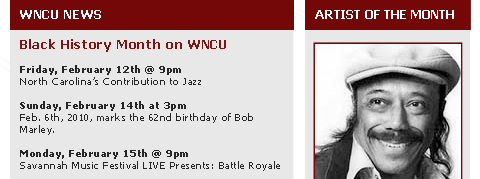
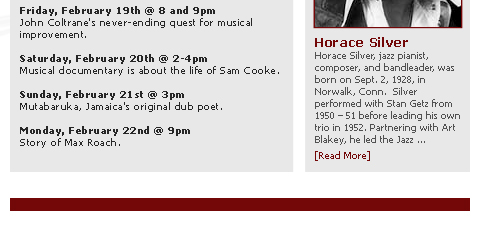
 Horace Silver, jazz pianist, composer, and bandleader, was born on Sept. 2, 1928, in Norwalk, Conn. Silver performed with Stan Getz from 1950 – 51 before leading his own trio in 1952. Partnering with Art Blakey, he led the Jazz Messengers from 1954, then formed his own quintet in 1956, where he performed his own compositions in arrangements that provided the template for much of the hard bop of the 1950s and ’60s. Influenced by Bud Powell and Thelonious Monk, Silver combined the sophistication of bebop with the earthiness of the blues in compositions such as “The Preacher,” “Opus de Funk,” and “Sister Sadie.”
Horace Silver, jazz pianist, composer, and bandleader, was born on Sept. 2, 1928, in Norwalk, Conn. Silver performed with Stan Getz from 1950 – 51 before leading his own trio in 1952. Partnering with Art Blakey, he led the Jazz Messengers from 1954, then formed his own quintet in 1956, where he performed his own compositions in arrangements that provided the template for much of the hard bop of the 1950s and ’60s. Influenced by Bud Powell and Thelonious Monk, Silver combined the sophistication of bebop with the earthiness of the blues in compositions such as “The Preacher,” “Opus de Funk,” and “Sister Sadie.” In 1950, while performing with Harold Holt in Hartford, Connecticut, Silver was discovered by saxophonist Stan Getz. Getz hired him for a group that toured extensively between 1950 and 1951. Within weeks of an August 1951 studio session, Silver left Getz’s group in order to establish himself in New York City’s flourishing jazz scene. By performing at Birdland, he was able to accompany many of the leading jazz talents of the day. In “Song of the Hawk,” Silver recalled playing Birdland with Hawk [Coleman Hawkins] and bassist Curly Russell. During the early 1950s, he performed with saxophonist Lester Young and bebop bassist Oscar Pettiford.
In 1950, while performing with Harold Holt in Hartford, Connecticut, Silver was discovered by saxophonist Stan Getz. Getz hired him for a group that toured extensively between 1950 and 1951. Within weeks of an August 1951 studio session, Silver left Getz’s group in order to establish himself in New York City’s flourishing jazz scene. By performing at Birdland, he was able to accompany many of the leading jazz talents of the day. In “Song of the Hawk,” Silver recalled playing Birdland with Hawk [Coleman Hawkins] and bassist Curly Russell. During the early 1950s, he performed with saxophonist Lester Young and bebop bassist Oscar Pettiford. An exhibition of the photographs and articles of Alexander “Alex” Rivera, Jr., nationally acclaimed photojournalist, will go on display February 7 through April 23, 2010, at the North Carolina Central University Art Museum.
An exhibition of the photographs and articles of Alexander “Alex” Rivera, Jr., nationally acclaimed photojournalist, will go on display February 7 through April 23, 2010, at the North Carolina Central University Art Museum.